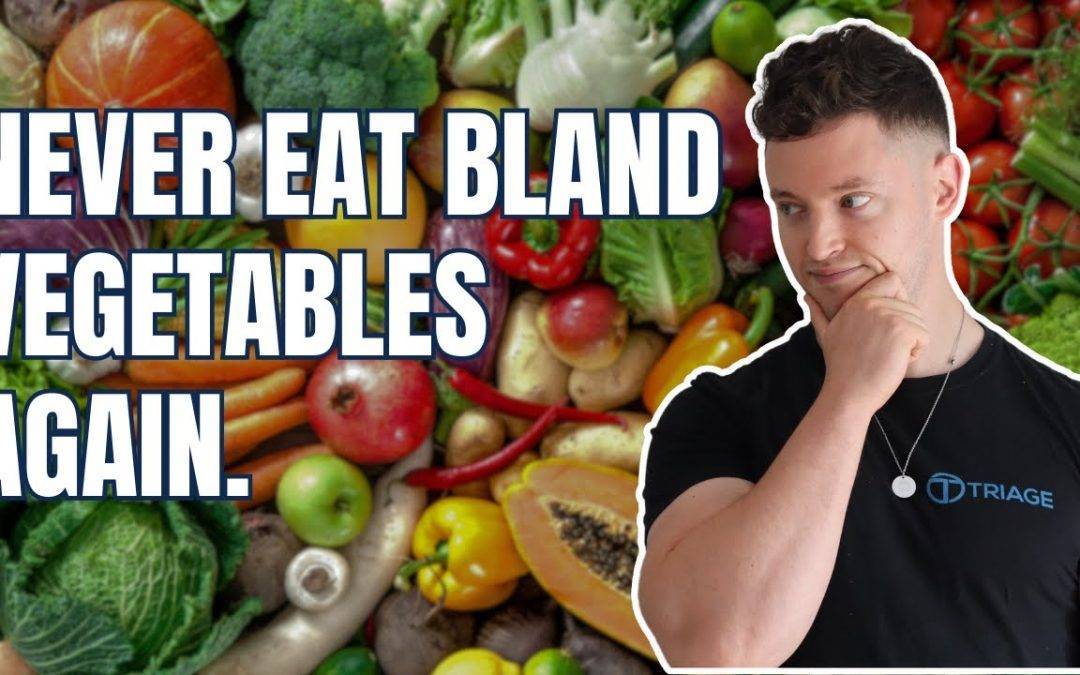Most people struggle to get enough fruit and veg in their diet, and one of the most frequent questions we get when we coach someone to better nutrition habits is some version of “how to eat more fruit and veg”. It is difficult, and if you didn’t grow up in a household where you consumed a lot of fruit and veg, you may be completely unaware of how to eat more fruit and veg at all. You just don’t have the context for it. So, this article is designed to give you a lot of ideas about how to get more fruit and veg in your diet.
How To Eat More Fruit and Veg Easily
Hello everybody it’s Brian 0’hAonghusa here, nutritionist and Coach with Triage Method.
Today, I’m going to be talking to you about how to increase your fruit and vegetable intake. Almost everybody knows that eating more fruits and vegetables, and eating enough of them, is an important part of a healthy diet and a healthy lifestyle. Eating more fruits and vegetables reduces the risk of non-communicable diseases, certain cancers, diabetes, heart disease, etc. Plus, they can help combat obesity since they are very filling and nutritious, and improve overall diet quality by providing lots of micronutrients, vitamins, minerals, and phytochemicals.
However, the reality is that people are just really bad at eating fruits and vegetables. Across the EU, only 10% of people actually eat five servings of fruits and vegetables per day or more (400 grams equates to about five servings). We could argue that you should be trying to push that up to 600-700 grams for maximal health benefits. Now, in Ireland, we actually have one of the highest intakes of fruits and vegetables in the European Union, but that still means only 30% of people are actually eating five servings of fruit and veg per day. That leaves two-thirds of the population who are not.
Tips On How To Get More Fruit And Veg In Your Diet
So, I want to look at some ways that you can implement to increase your fruit and vegetable intake and take advantage of the benefits they bring. The first thing we can look at is making smoothies. Put some spinach leaves in there, put some kale in there, and add some frozen fruit to make the drink cold. You can also add some protein powder if you like. Of course, if you want to make more of a meal out of it, you can add some sort of protein source, more carbohydrates, or some fats. But let’s focus on the fruits and vegetables.
Another easy way to get more is by making soup. Add soup to your meals in some shape or form. You can have soups as starters for lunches or dinners. It’s actually shown that pre-loading with soup before a meal reduces overall energy intake at the meal. You can also add pulses like chickpeas, beans, and lentils to soup to increase the vegetable content.
Using pulses like chickpeas, lentils, and beans is another great idea. Add them to meals where you can. Have baked beans on toast, throw beans into chilli or pasta dishes, add lentils into curries, or add chickpeas to curries. There’s quite a lot of versatility with these foods, and they can bulk up the fibre and plant content in your meals.
Speaking of rice, you can use vegetable rices, like cauliflower rice at meals. You could do a 50-50 mix of regular rice and cauliflower rice, or even go all-in with cauliflower rice to increase your vegetable intake.
Now, let’s address the ease of preparation, which can sometimes be a barrier. Understand that you can actually prepare certain vegetables very quickly using a microwave. For example, if you have chopped broccoli, put it in a bowl, cover it with a bit of water, and microwave it for two or three minutes. Similarly, pouring boiling water over spinach leaves wilts them down almost instantaneously.
Making vegetables taste better is crucial. People often complain about not liking the taste of vegetables, which makes it harder to eat them. To reduce this friction and increase vegetable consumption, focus on flavour. When preparing dishes like curries, chilis, Bolognese, pasta, or stir-fries, they already have robust flavours that can mask the taste of vegetables. You can easily incorporate diced courgettes, sliced aubergines, diced peppers, and carrots into these dishes.
Experiment with seasonings to enhance vegetable flavours. Consider using spices like cumin, chilli flakes, or paprika, along with acids like lemon juice or vinegar, and add a salty umami flavour with ingredients like Parmesan, chorizo, or olives. A little added fat, like olive oil or toasted nuts, can also go a long way.
When it comes to cooking vegetables, roasting is an excellent option. It enhances their flavours and can be done in large batches for meal prep. Sneak vegetables into dishes like curries, stir-fries, omelettes, or sandwiches. Adding vegetables to these meals makes them more nutritious and enjoyable.
For breakfast, consider adding fruit to your meals. Berries are a great option as they are lower in calories but high in nutrient density. Don’t just sprinkle a few berries; make a bowl of them to truly increase your fruit intake.
How To Get More Fruit and Veg In Your Diet Conclusion
Incorporate these tips into your daily routine, and you’ll significantly increase your fruit and vegetable intake. By doing so, you’ll reap the numerous health benefits they offer. That’s all for this article. I hope you’ve found these tips helpful. If you really don’t know where to start with your nutrition, then we recommend starting with our article on how to set up the diet correctly. If you need more specific help with your diet, we do offer comprehensive nutrition coaching. We also teach people to be nutrition coaches, if you are someone who is interested in learning more about actually coaching nutrition.


